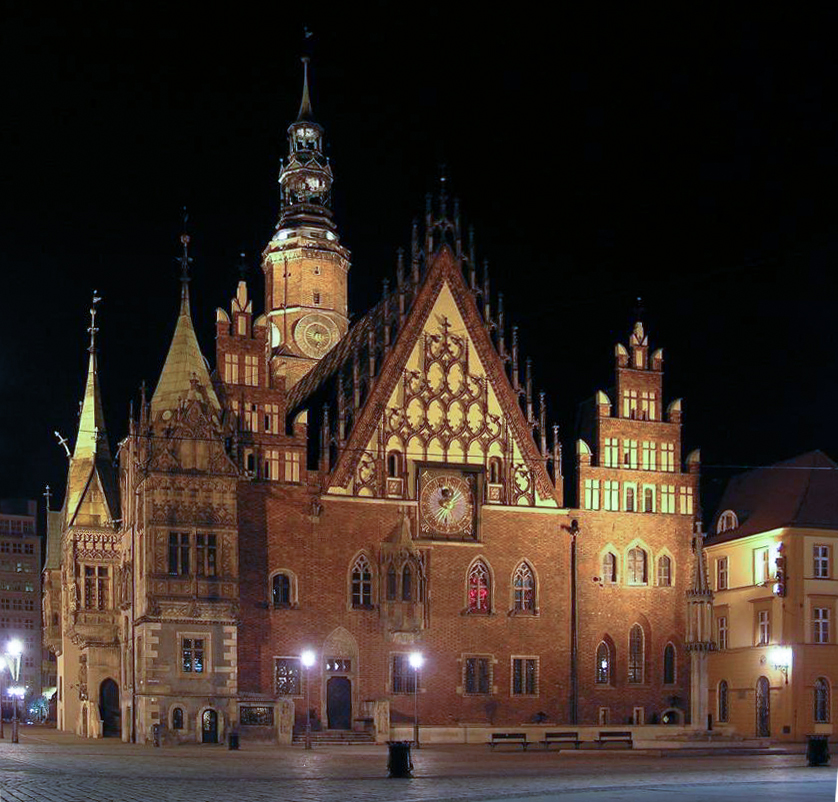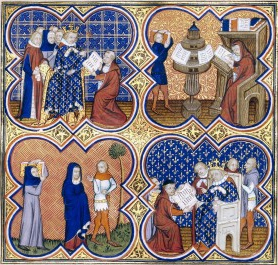|
Stolec, Lower Silesian Voivodeship
Stolec (translation: ''Stool''; german: Stolz) is a village in the administrative district of Gmina ZńÖbkowice ŇölńÖskie, within ZńÖbkowice ŇölńÖskie County, Lower Silesian Voivodeship, in south-western Poland. Prior to 1945 it was in Germany. It lies approximately east of ZńÖbkowice ŇölńÖskie, and south of the regional capital WrocŇāaw WrocŇāaw (; , . german: Breslau, , also known by other names) is a city in southwestern Poland and the largest city in the historical region of Silesia. It lies on the banks of the Oder in the Silesian Lowlands of Central Europe, roughly .... The village has an approximate population of 1,200. References Stolec {{ZńÖbkowiceŇölńÖskie-geo-stub ... [...More Info...] [...Related Items...] OR: [Wikipedia] [Google] [Baidu] |
Countries Of The World
The following is a list providing an overview of sovereign states around the world with information on their status and recognition of their sovereignty. The 206 listed states can be divided into three categories based on membership within the United Nations System: 193 UN member states, 2 UN General Assembly non-member observer states, and 11 other states. The ''sovereignty dispute'' column indicates states having undisputed sovereignty (188 states, of which there are 187 UN member states and 1 UN General Assembly non-member observer state), states having disputed sovereignty (16 states, of which there are 6 UN member states, 1 UN General Assembly non-member observer state, and 9 de facto states), and states having a special political status (2 states, both in free association with New Zealand). Compiling a list such as this can be a complicated and controversial process, as there is no definition that is binding on all the members of the community of nations conc ... [...More Info...] [...Related Items...] OR: [Wikipedia] [Google] [Baidu] |
Voivodeships Of Poland
A voivodeship (; pl, województwo ; plural: ) is the highest-level administrative division of Poland, corresponding to a province in many other countries. The term has been in use since the 14th century and is commonly translated into English as "province". The administrative divisions of Poland, Polish local government reforms adopted in 1998, which went into effect on 1 January 1999, created sixteen new voivodeships. These replaced the 49 subdivisions of the Polish People's Republic, former voivodeships that had existed from 1 July 1975, and bear a greater resemblance (in territory, but not in name) to the voivodeships that existed between 1950 and 1975. Today's voivodeships are mostly named after historical and geographical regions, while those prior to 1998 generally took their names from the cities on which they were centered. The new units range in area from under (Opole Voivodeship) to over (Masovian Voivodeship), and in population from nearly one million (Opole Voivodes ... [...More Info...] [...Related Items...] OR: [Wikipedia] [Google] [Baidu] |
Lower Silesian Voivodeship
Lower Silesian Voivodeship, or Lower Silesia Province, in southwestern Poland, is one of the 16 voivodeships (provinces) into which Poland is divided. The voivodeship was created on 1 January 1999 out of the former WrocŇāaw, Legnica, WaŇābrzych and Jelenia G√≥ra Voivodeships, following the Polish local government reforms adopted in 1998. It covers an area of , and has a total population of 2,899,986. It is one of the richest provinces in Poland as it has valuable natural resources such as copper, silver, gold, brown coal and rock materials (inter alia granite, basalt, gabbro, diabase, amphibolite, porphyry, gneiss, serpentinite, sandstone, greywacke, limestone, dolomite, bentonite, kaolinite, clay, aggregate), which are exploited by the biggest enterprises. Its well developed and varied industries attract both domestic and foreign investors. Its capital and largest city is WrocŇāaw, situated on the Oder River. It is one of Poland's largest and most dynamic ci ... [...More Info...] [...Related Items...] OR: [Wikipedia] [Google] [Baidu] |
Powiat
A ''powiat'' (pronounced ; Polish plural: ''powiaty'') is the second-level unit of local government and administration in Poland, equivalent to a county, district or prefecture ( LAU-1, formerly NUTS-4) in other countries. The term "''powiat''" is most often translated into English as "county" or "district" (sometimes "poviat"). In historical contexts this may be confusing because the Polish term ''hrabstwo'' (an administrative unit administered/owned by a ''hrabia'' (count) is also literally translated as "county". A ''powiat'' is part of a larger unit, the voivodeship ( Polish ''województwo'') or province. A ''powiat'' is usually subdivided into '' gmina''s (in English, often referred to as " communes" or " municipalities"). Major towns and cities, however, function as separate counties in their own right, without subdivision into ''gmina''s. They are termed " city counties" (''powiaty grodzkie'' or, more formally, ''miasta na prawach powiatu'') and have roughly the sam ... [...More Info...] [...Related Items...] OR: [Wikipedia] [Google] [Baidu] |
Gmina
The gmina (Polish: , plural ''gminy'' , from German ''Gemeinde'' meaning ''commune'') is the principal unit of the administrative division of Poland, similar to a municipality. , there were 2,477 gminas throughout the country, encompassing over 43,000 villages. 940 gminas include cities and towns, with 302 among them constituting an independent urban gmina ( pl, gmina miejska) consisting solely of a standalone town or one of the 107 cities, the latter governed by a city mayor (''prezydent miasta''). The gmina has been the basic unit of territorial division in Poland since 1974, when it replaced the smaller gromada (cluster). Three or more gminas make up a higher level unit called powiat, except for those holding the status of a city with powiat rights. Each and every powiat has the seat in a city or town, in the latter case either an urban gmina or a part of an urban-rural one. Types There are three types of gmina: #302 urban gmina ( pl, gmina miejska) constituted either by ... [...More Info...] [...Related Items...] OR: [Wikipedia] [Google] [Baidu] |
Gmina ZńÖbkowice ŇölńÖskie
__NOTOC__ Gmina ZńÖbkowice ŇölńÖskie is an urban-rural gmina (administrative district) in ZńÖbkowice ŇölńÖskie County, Lower Silesian Voivodeship, in south-western Poland. Its seat is the town of ZńÖbkowice ŇölńÖskie, which lies approximately south of the regional capital WrocŇāaw. The gmina covers an area of , and as of 2019 its total population is 21,775. Neighbouring gminas Gmina ZńÖbkowice ŇölńÖskie is bordered by the town of PiŇāawa G√≥rna and the gminas of Bardo, CiepŇāowody, Kamieniec ZńÖbkowicki, Niemcza, Stoszowice and Zińôbice. Villages Apart from the town of ZńÖbkowice ŇölńÖskie, the gmina contains the villages of Bobolice, Braszowice, Brodzisz√≥w, Grochowiska, Jaworek, Kluczowa, Koziniec, Olbrachcice Wielkie, PawŇāowice, Rakowice, Sadlno, Sierosz√≥w, SiodŇāowice, Stolec, StrńÖkowa, SulisŇāawice, Szklary, Szklary-Huta, Tarn√≥w and Zwr√≥cona. Twin towns ‚Äď sister cities Gmina ZńÖbkowice ŇölńÖskie is twinned with: * Bran, Romania * ńĆer ... [...More Info...] [...Related Items...] OR: [Wikipedia] [Google] [Baidu] |
Translation
Translation is the communication of the Meaning (linguistic), meaning of a #Source and target languages, source-language text by means of an Dynamic and formal equivalence, equivalent #Source and target languages, target-language text. The English language draws a terminology, terminological distinction (which does not exist in every language) between ''translating'' (a written text) and ''Language interpretation, interpreting'' (oral or Sign language, signed communication between users of different languages); under this distinction, translation can begin only after the appearance of writing within a language community. A translator always risks inadvertently introducing source-language words, grammar, or syntax into the target-language rendering. On the other hand, such "spill-overs" have sometimes imported useful source-language calques and loanwords that have enriched target languages. Translators, including early translators of sacred texts, have helped shape the very l ... [...More Info...] [...Related Items...] OR: [Wikipedia] [Google] [Baidu] |
Germany
Germany, officially the Federal Republic of Germany (FRG),, is a country in Central Europe. It is the most populous member state of the European Union. Germany lies between the Baltic and North Sea to the north and the Alps to the south. Its 16 constituent states have a total population of over 84 million in an area of . It borders Denmark to the north, Poland and Czechia to the east, Austria and Switzerland to the south, and France, Luxembourg, Belgium, and the Netherlands to the west. The nation's capital and most populous city is Berlin and its main financial centre is Frankfurt; the largest urban area is the Ruhr. Settlement in what is now Germany began in the Lower Paleolithic, with various tribes inhabiting it from the Neolithic onward, chiefly the Celts. Various Germanic tribes have inhabited the northern parts of modern Germany since classical antiquity. A region named Germania was documented before AD 100. In 962, the Kingdom of Germany formed the ... [...More Info...] [...Related Items...] OR: [Wikipedia] [Google] [Baidu] |
ZńÖbkowice ŇölńÖskie
ZńÖbkowice ŇölńÖskie ( ; german: link=no, Frankenstein in Schlesien; szl, ŇölŇĮnske ZŇĮmbkowicy) is a town in Lower Silesian Voivodeship, in south-western Poland. It is the seat of ZńÖbkowice ŇölńÖskie County and of a local municipality called Gmina ZńÖbkowice ŇölńÖskie. The town lies approximately south of the regional capital WrocŇāaw. , it had a population of 15,004. History The town was established by Duke of Silesia Henry IV Probus, of the Piast dynasty, as ''Frankenstein'' in the early 13th century, following the Mongol invasion of Poland. The town was founded in the vicinity of the old Polish settlement of Sadlno, through which ran a trade route connecting Silesia and Bohemia. The town was sited on a piece of land that belonged partly to the episcopal lands of Zwr√≥cona and partly to the Monastery at Trzebnica. The town was located exactly halfway between the sites of two previously existing towns that had failed to attract enough settlers: Frankenberg and L√∂w ... [...More Info...] [...Related Items...] OR: [Wikipedia] [Google] [Baidu] |
WrocŇāaw
WrocŇāaw (; , . german: Breslau, , also known by other names) is a city in southwestern Poland and the largest city in the historical region of Silesia. It lies on the banks of the Oder in the Silesian Lowlands of Central Europe, roughly from the Sudeten Mountains to the south. , the official population of WrocŇāaw is 674,132 making it the third largest city in Poland. The population of the WrocŇāaw metropolitan area is around 1.25 million. WrocŇāaw is the historical capital of Silesia and Lower Silesia. Today, it is the capital of the Lower Silesian Voivodeship. The history of the city dates back over 1,000 years; at various times, it has been part of the Kingdom of Poland, the Kingdom of Bohemia, the Kingdom of Hungary, the Habsburg monarchy of Austria, the Kingdom of Prussia and Germany, until it became again part of Poland in 1945 as the result of territorial changes of Poland immediately after World War II. WrocŇāaw is a university city with a student popula ... [...More Info...] [...Related Items...] OR: [Wikipedia] [Google] [Baidu] |




